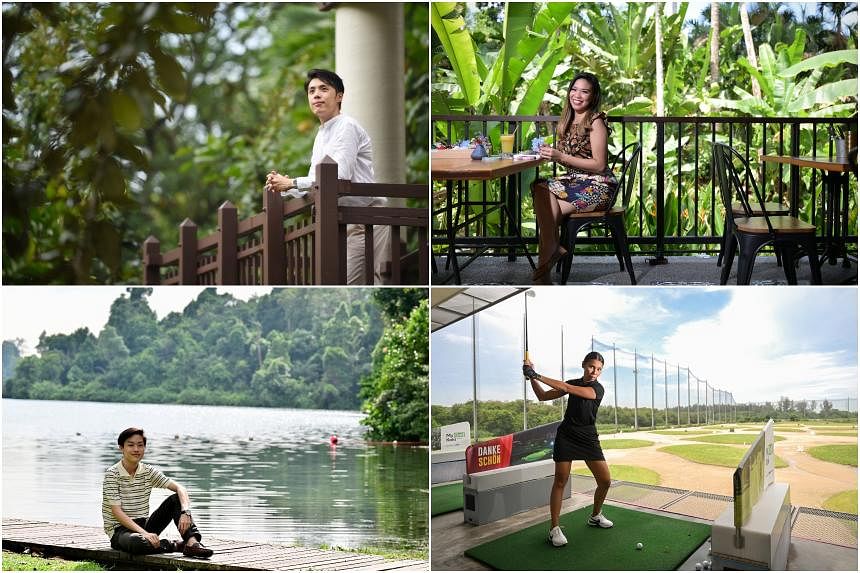SINGAPORE – From sprawling public parks to heartland towns, Singapore’s urban spaces have become “places of the heart” for many.
The city-state’s built environment developed at breakneck speed when Singapore went from Third World country to First in one generation. It started out as a developing country in 1965 after Independence and became a developed country by the 1980s. This laid the foundation for great strides in its urban development.
In the early days, Singapore nurtured a vision of being a “Garden City” in 1967. That concept was later tweaked to “City in a Garden”.
Then in 2020, the National Parks Board announced it would work with the community to extend and enhance greenery to transform Singapore into a “City in Nature”, so Singaporeans can enjoy a high-quality living environment despite urbanisation and climate change.
Singapore’s young designers and creatives find that the evolving visual landscape and its abundant greenery have shaped their imagination.
For 25-year-old tech entrepreneur Brian Tay, the green spaces at Singapore’s oldest reservoir, MacRitchie Reservoir, are a restorative sanctuary for his fast-paced work life.
Over at Marina Bay Golf Course, which is open to the public, designer Syarafina Kamsani, 34, can quiet her mind even as she is intent on teeing off. She says this helps her to stay clear-headed when working as part of a design team at global firm RSP Singapore.
American author Barry Lopez explains why geography ties people to certain places, and allows them to forge an emotional connection to the built environment or nature.
During a 1996 lecture at a writers’ festival in Hobart, Australia, the author of the best-selling Arctic Dreams (1986) called this connection to nature and the environment the “literature of place”.
“It is my belief that human imagination is shaped by the architecture it encounters at an early age,” said Lopez, who died in 2020 during the Covid-19 pandemic.
“The visual landscape, of course, or the depth, elevation and hues of a cityscape play a part here, as does the way sunlight everywhere etches lines to accentuate forms.”
In this new series, The Straits Times speaks to designers and residents about urban spaces that inspire them.
Disrupting the daily grind with a park jaunt
Mr Brian Tay, founder of ShopXR
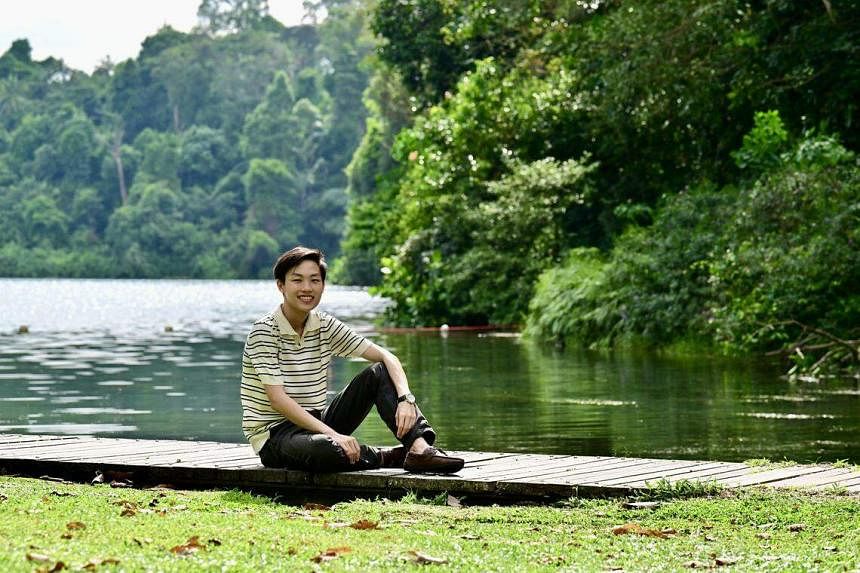
Parks in Singapore resonate deeply with Mr Brian Tay, founder of ShopXR, a business-to-business augmented-reality (AR) tech platform provider that helps furniture and home appliance retail brands boost sales by integrating AR into their sales process and social media.
He says he feels at a loss without green spaces.
“Parks such as MacRitchie Reservoir’s verdant lawns and the greenery along Sembawang River near my home in Admiralty Drive hold cherished childhood memories,” recalls the 25-year-old entrepreneur, who cycled at the parks with his family in the past.
As he grew older, the parks became starting points of his journey of self-discovery.
He graduated in 2019 from Nanyang Polytechnic, where he pursued aerospace studies, but found his calling in digital marketing while studying. He delved deeper into the field with the help of mentors and online self-study, and founded ShopXR in 2023.
“Parks are now a sanctuary for mental and physical health where I enjoy exercise sessions with my partner or take weekly solo runs to unwind, reflect and find inspiration,” he says.
A typical work day sees him leveraging 3D technologies to transform home appliances and furniture pieces into 3D visual assets which can be superimposed onto home interiors in real time.
Together with a team of five consultants and designers, he creates digital twins of physical products that clearly show how a new sofa or dining table will fit into a prospective customer’s home or office.
“As a young entrepreneur in fast-paced Singapore, overcoming obstacles and achieving the next milestones are constant challenges that occupy my mind and sometimes keep me up at night,” says Mr Tay.
“While building a business, it is also necessary to break away from the routine and seek inspiration. Running in the park allows me to pause, reflect and recalibrate. It clears my mind, alleviates stress and prepares me to return to my desk with renewed zest.”
Cultivating communal connections through nature
Jireh Lee, associate, DP Architects
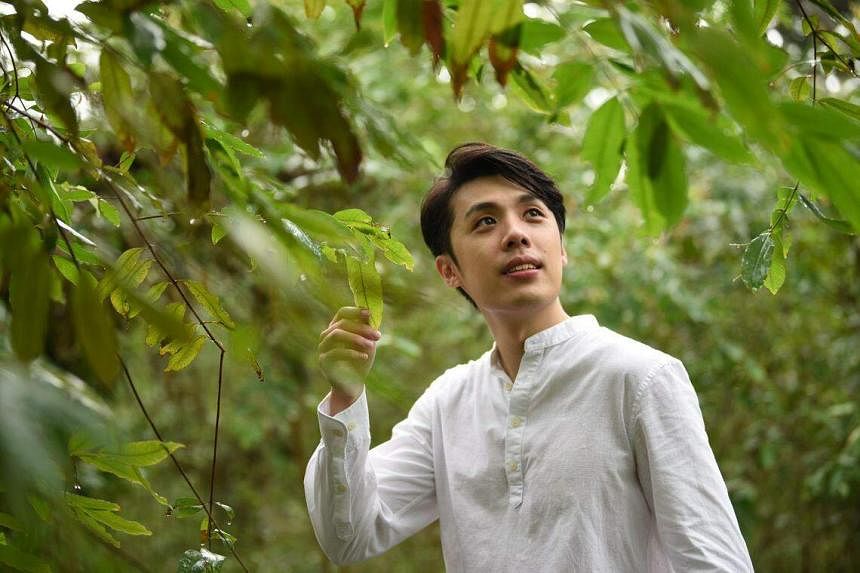
Mention the East of Singapore, and most people will think of the 15km stretch of beach at East Coast Park, which is a popular haunt for families, cyclists and roller-skaters.
But not for architect Jireh Lee, who works at home-grown practice DP Architects. The group is one of the largest in the world, with more than 900 employees in 11 countries.
“Pasir Ris Park holds sentimental value for me, and the quaint and serene nature of the park draws me in,” says the 32-year-old bachelor.
Projects he has worked on include the Singapore Armed Forces Reservists Association (Safra) Choa Chu Kang Clubhouse project, a Green Mark Platinum super-low-energy clubhouse certified by the Building and Construction Authority. The clubhouse won the Sports Design Built and Corporate Interior Built at the World Design Awards in 2023.
Mr Lee says the park’s tranquillity allows for greater immersion of the senses in nature.
“From my school days to adult years, Pasir Ris Park’s serenity has been a constant companion for me.
“A walk within its peaceful grounds always leaves me feeling rejuvenated, with the sights and sounds of its biodiversity granting me a sense of inner repose,” says Mr Lee, who graduated from the National University of Singapore in 2018 with a master’s in architecture.
He also studied at Japan’s Kyoto Institute of Technology in 2016, and Swiss science and technology research university ETH Zurich in 2015.
He says being in an urban jungle can be mentally taxing, so surrounding himself with nature reinvigorates his connection with all things organic.
“As architects, we should work towards intertwining the built environment with nature. Biophilic designs and lush greenery should take precedence in urban design,” he says.
He adds that the cohesion that public green spaces, such as community gardens, affords residents of all backgrounds helps foster a cohesive, like-minded community.
This connection with nature has affected how Mr Lee views and designs projects like the Safra Choa Chu Kang Clubhouse.
“The intention from inception was for the clubhouse to be a natural extension of Choa Chu Kang Park, creating an organic interlacing of fitness amenities, nature and community, where the boundaries between each would be imperceptible,” he says.
And Pasir Ris Park has a special place in his heart, as it has helped him to focus on building a “meaningful relationship with nature” in both his personal and professional life.
Meditative golf retreat to prep for the next big idea
Syarafina Kamsani, designer, RSP Singapore

The unhurried, meditative quality of golf has helped Ms Syarafina Kamsani silence her thoughts and detach herself from hectic city life.
“My mind is constantly grinding its gears to produce the proverbial ‘next big idea’,” says the 34-year-old designer at RSP Singapore, a global multidisciplinary architectural and engineering design group established here in 1956.
She was part of the RSP team that worked on the Changi Airport Terminal 2 Expansion in 2023, SIT University’s Punggol Campus Court earlier in 2024, and the National Centre for Infectious Diseases in 2014.
In her work, she adopts a practical approach to these projects, and prioritises communication and collaboration.
To be effective in interacting with others in the fast-paced field of urban design, she needs to keep a clear mind.
“I’ve found refuge at Marina Bay Golf Course,” she says. “Ever since I took up golf, it has provided a haven where I can silence my thoughts and enjoy the present.
“Being active in nature has enabled me to detach myself from the daily grind and gain clarity. This time not only serves as a source of inspiration, but also as moments for gratitude for the life I have cultivated.”
One of the main reasons she took up golf was to spend more time with her father, Mr Kamsani Samion, who worked in the oil and gas industry before retiring in Bali, Indonesia. Ms Syarafina, who is single, lives in Singapore with her younger sister.
“In our moments together, he would always give me words of encouragement and appreciation. So, being on a golf course, for me, is like being a child again.”
She also credits her outlook on mental and physical health to psychologist Susan David’s 2016 bestseller, Emotional Agility, which taught her the importance of introspection, understanding emotional needs, and the role of human nature in navigating the challenges of daily life.
Ms Syarafina says: “Taking the time to step back, rest and recharge allows us a clearer perspective on life with new-found energy and rigour.”
The draw of Mount Pleasant’s leafy enclave
Lee Xin Li, independent artist
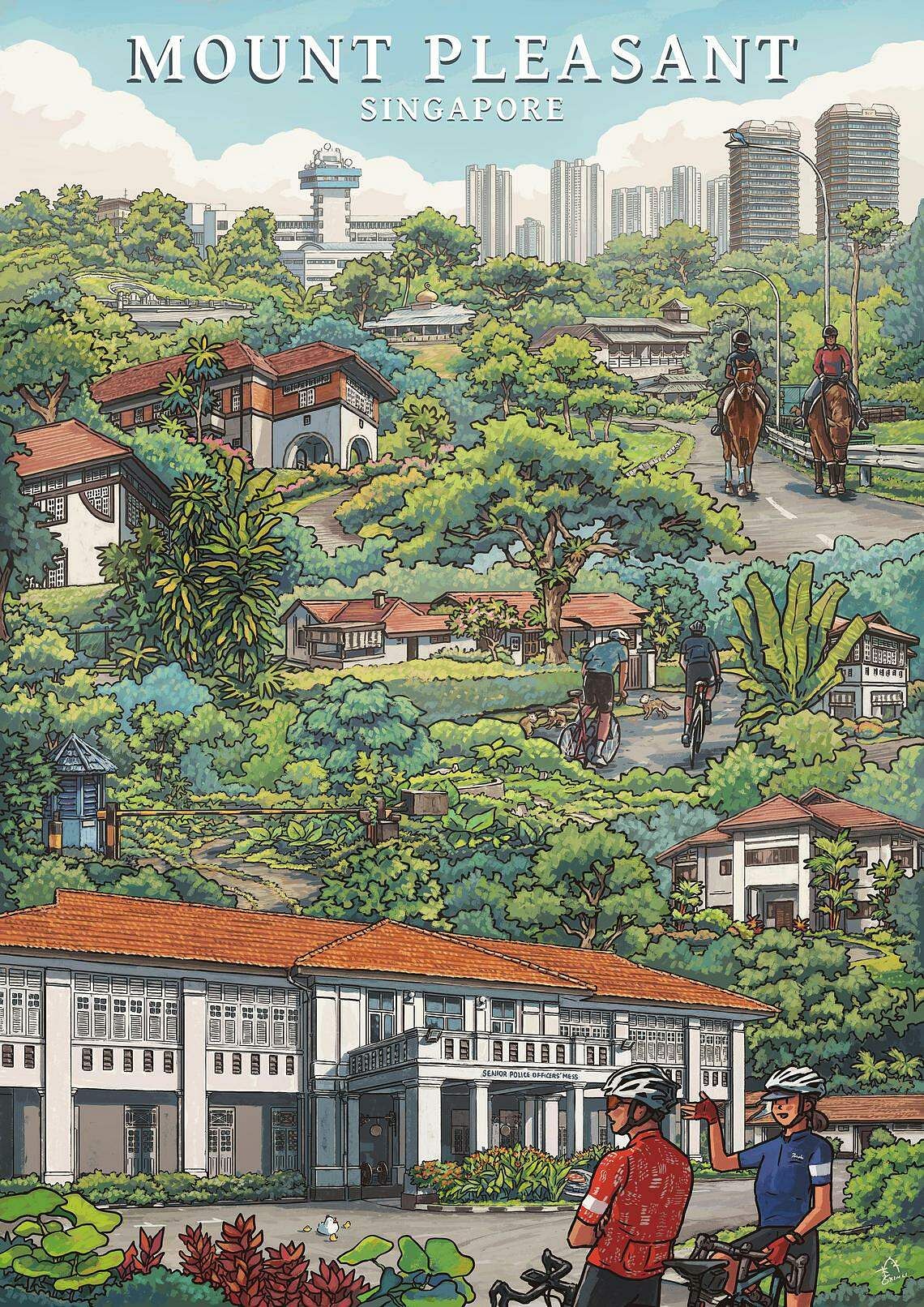
Urban illustrator Lee Xin Li has a soft spot for the area around old Lornie Road, where he grew up.
The place of his heart is not a specific location, he explains, but rather an area that includes Caldecott Hill, Mount Pleasant and Lornie Road, which he revisits to preserve his fond memories.
“I used to live near Bukit Brown Cemetery in Lornie Road for at least a decade since about 2000, and I have seen how the leafy enclave has changed so much.
“I’ve seen the construction and transformation of Lornie Highway as well as parts of Bukit Brown Cemetery, the old Police Academy and how the low-rise apartments that used to be at Toa Payoh Rise and the former Caldecott Broadcast Centre were cleared over the years for subsequent developments,” he says.
The 36-year-old independent artist and local storyteller – who goes by the handle “Pok Pok & Away” online, and has more than 26,000 Facebook followers and 22,700 Instagram followers – says the area “played a big role in my growing-up years”.
Lee majored in architecture at National University of Singapore’s School of Design and Environment in 2015, and draws inspiration from architecture, heritage and food. He has been collaborating with the Urban Redevelopment Authority on art pieces since 2015.
His prints and artworks of urban life in Singapore will also be featured at the Independent Market, which is part of shopping event Boutique Fairs Singapore.
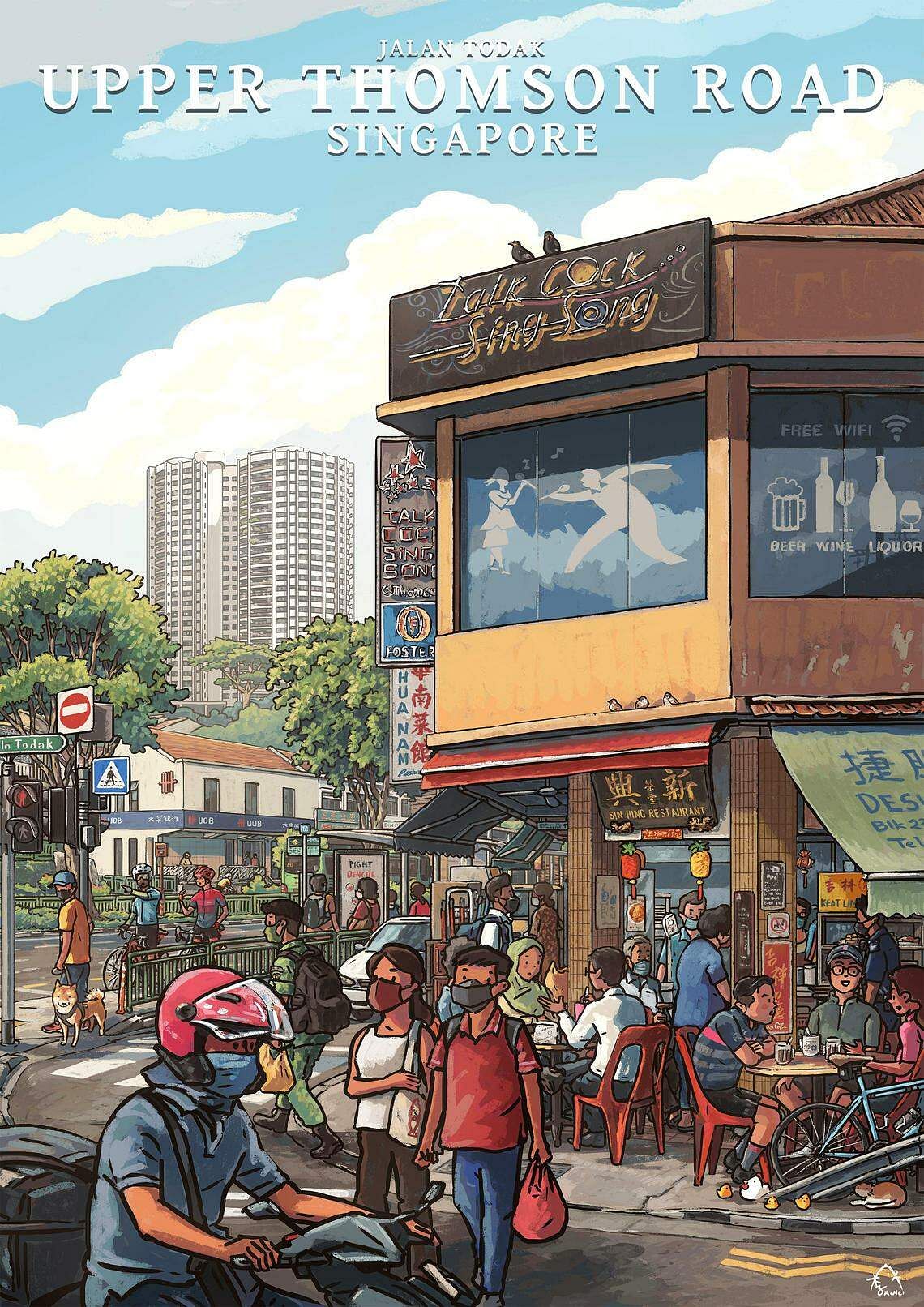
Lee says he often cycled through the area around old Lornie Road during the pandemic because of the peace and quiet it offered, as well as the lighter traffic following the completion of Lornie Highway in 2018.
As his current work requires him to create artworks digitally and deal with clients online, he finds that taking time in the mornings for breakfast and cycling helps him clear his mind and relieve stress.
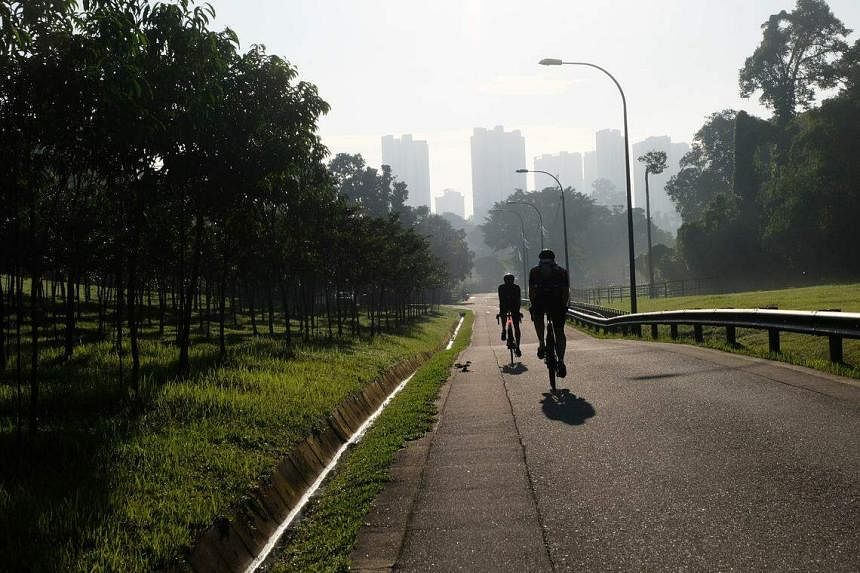
His scenic cycling route takes him from Mount Pleasant Road to Jalan Mashhor, where horse riders can be seen taking a leisurely trot, emerging from the area’s equestrian facilities.
After that, Lee goes for a hearty breakfast around Mount Pleasant, typically at the cafes and kopitiams in Sin Ming and Thomson Roads.
Carving out downtime to stay on top
Joyce Orallo Lim, designer and founder of Chokmah
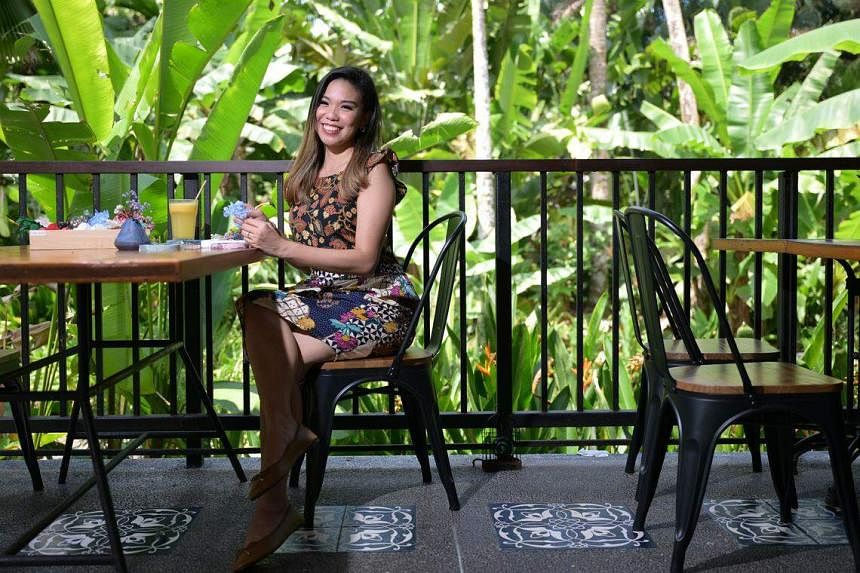
The Singapore Botanic Gardens have been such an inspiration over the years for designer Joyce Orallo Lim that she has created a line of floral goods as a tribute to the Unesco World Heritage Site’s many splendours.
Called the Forever Bloom Collection, Ms Lim depicts a range of flowers such as roses and orchids on homeware, paintings and illustrations.
She has also launched workshops on creating homeware such as trays and coasters with floral designs.
“As a young girl, I remember nature-filled hours at the Botanic Gardens when my grandfather would allow me and my brother to run freely on the lawns and enjoy nature,” recalls Ms Lim, 37.
She is married to Mr Matthew Lim, Chokmah’s operations manager. They have a seven-year-old son, Jireh, and a two-year-old daughter, Abigail.
Ms Lim says her grandfather regaled the family with stories of his life and experiences during picnics at the Botanic Gardens.
After she founded Chokmah (pronounced “hok-mah”, which is Hebrew for “divine wisdom”) in 2020, she returned frequently to commune with nature and go deeper into rest and relaxation.
She says this helps her stay focused while dealing with the ups and downs of running her own business.
“By spending time at the gardens in quiet contemplation, I have discovered that there are three forms of restfulness,” she adds. “Emotional and physical rest are important for the body as they help one to feel instantly recharged.”
But spiritual rest is what she tries to get more of. She finds that immersing herself in nature at the gardens helps her connect with her Christian faith on a deeper level.
“It also builds up my spiritual energy to face unexpected challenges in life.”
